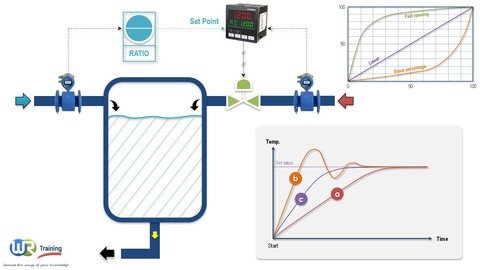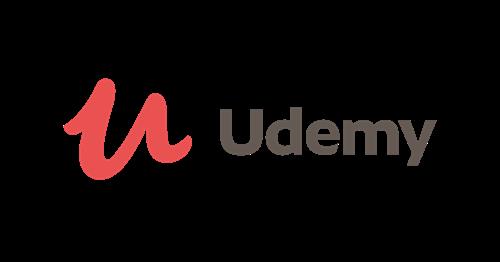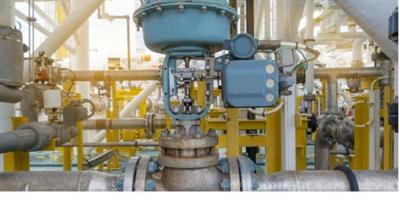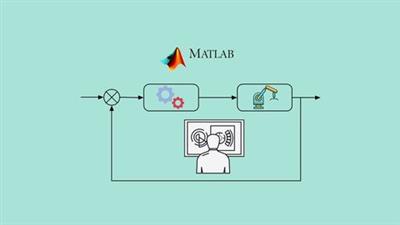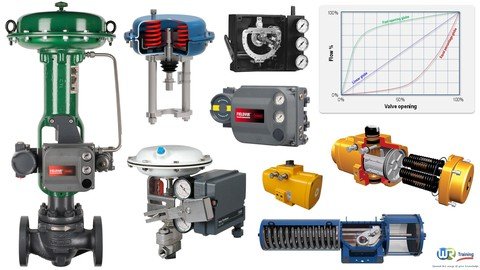Process Control & Instrumentation 16 Hour Masterclass
"softddl.org"
11-05-2023, 06:31
-
Share on social networks:
-
Download for free: Process
-
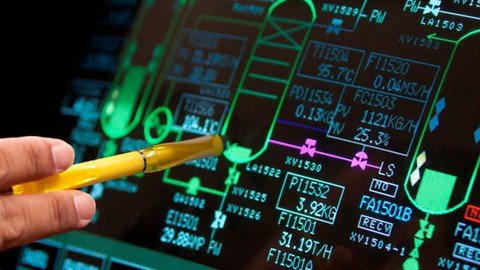
Published 5/2023
MP4 | Video: h264, 1280x720 | Audio: AAC, 44.1 KHz
Language: English | Size: 6.56 GB | Duration: 16h 18m
Know & understand process control PID controllers control valves actuators positioners & instrumentation like a pro

Published 5/2023
MP4 | Video: h264, 1280x720 | Audio: AAC, 44.1 KHz
Language: English | Size: 6.56 GB | Duration: 16h 18m
Know & understand process control PID controllers control valves actuators positioners & instrumentation like a pro
Free Download What you'll learn
Learn the essentials of process controls and PID controllers for a successful career in process industries
Successfully draw the correct information from basic to advanced process control loops
Master the intricate terminological details of process control (process variable, set point, error, offset, load disturbance...)
Identify any process control loop and describe its main tasks and functionalities
Describe the basic function and method of operation for the main control loop components (sensor, transmitter, controller, actuator, control valve...)
Differentiate between feedback and feedforward control loops
Explain the basic implementation process for each of the following types of control: Cascade, ratio, split range.
Differentiate between On/Off, discrete, multi-step and continuous controllers
Describe the basic mechanism, pros and cons of the following modes of control action: On/Off, Proportional (P), Integral (I), Derivative (D), PI, PID...
Describe the general goal of PID controller tuning
Apply the Ziegler Nicholls method to tune P, PI and PID controllers for optimum performance
Understand control valves working principles for successful operation of your plant and piping systems
Understand control valve construction details (bonnet, stem, disc, seat, packing, body, actuator, positioner.)
Identify and know the principles of operation of common control valve actuators (diaphragm, piston, rack and pinion, scotch yoke)
Dismantle and assemble various types of control valves and actuators using 3D and 2D models
Understand how single acting and double acting pneumatic actuators work through graphics and 3D animations
Know how to convert a single acting spring return actuator to a double acting actuator and vice versa
Understand the concept of failure mode in control valves : Fail Open "FO", Fail Closed "FC", Fail As Is "FAI"
Understand the concept of "Air-to-push-up" and Air-to-push-down"
Understand the concept of "direct-acting" and "reverse-acting"
Know how to convert a fail close actuator to a fail open actuator and vice versa
Understand the concept of valve flow coefficient "Cv" and familiarize yourself with the various units
Know how to determine flowrate and pressure drop through control valves for different valve lifts
Know how to match the valve characteristics to the process
Know how to construct the installation curve for a given control valve
Understand the effect of selecting a control valve larger than necessary
Understand the effect of differential pressure on the valve lift and actuator operation
Differentiate between fast opening, linear and equal percentage valve characteristics
Understand how valve positioners operate
Know the different types of valve positioners (P/P, I/P, force balance, motion balance, digital.)
Understand when a positioner should be fitted
Understand the working principles of I/P converters and how they are used in control valves
Understand the control of pressure in a pipe
Understand the control of flow in a pipe
Understand how self-acting pressure controls work and their applications
Understand how self-acting temperature controls work and their applications
Understand flow merging control
Understand flow splitting control
Understand centrifugal pump control systems (discharge throttling, variable speed drive, minimum flow.)
Understand positive displacement pump control systems (recirculation pipe, variable speed drive, stroke adjustment.)
Understand compressor control systems (capacity control, variable speed drive, anti-surge.)
Understand heat exchanger control systems (direct control, bypass control, back pressure control.)
Understand reactor temperature control systems
Understand fired heater control systems
Understand container and vessel control systems
Understand electric motor control systems (ON / OFF actions)
Know and understand the concept of Safety Instrumented Systems (SIS)
Know and understand the concept of Alarm Systems and Interlocks
Understand through extensive 3D animation the techniques and methods used in process industries to measure temperature, pressure, flow and level
Put your knowledge to the test at the end of each section with a valuable technical quiz (420+ questions and solved problems)
Get access to a set of valuable downloadable resources
Requirements
Some engineering or field knowledge is preferable but not mandatory. All the concepts are explained in depth using an-easy-to-understand language to allow students to build their knowledge from the ground up
Please note that the mathematics in the PID tuning and control valve sizing sections are undemanding. All the work can be done with a hand-held calculator
Description
Welcome to this 16 hour masterclass on process control and instrumentation.This valuable masterclass is organized into 6 parts :Part 1: Process Control and PID* ControllersPart 2: The Final Control Element - Control Valves, Actuators and PositionersPart 3: Practical Examples of Temperature, Pressure, Flow and Level ControlsPart 4: Practical Examples of Process Equipment Controls (Heat Exchangers, Pumps, Compressors, Reactors, Piping Systems.)Part 5: Safety Instrumented Systems (SIS), Interlocks and AlarmsPart 6: Instrument Devices For Temperature, Pressure, Flow and Level MeasurementPart 1 is an essential guide to a complete understanding of process control principles and PID* controllers design and tuning. In this first module, we will break down for you all the process control principles into easily digestible concepts, like feedback controls, open loops, split range controls, self-acting controls... Useful reference data, technical recommendations, field observations and numerous process control schemes are presented in an-easy-to-understand format. This module also cautions the process control engineer that the performance of a properly designed process control system can be severely compromised when used in conjunction with incorrect PID* controller settings. In this regard, PID* controller tuning guidelines and their rationale according to the Ziegler Nicholls method are offered to ensure optimum performance. Typical tuning examples have been included to assist you in understanding how specific formulae are applied.Part 2 focuses on the final control element of any process control system, that is the valve-actuator-positioner assembly. In this second module, you will find valuable insights into the working principles and construction details of the following control elements:Control valves (sliding stem and rotary / fast opening, linear and equal percentage)Mixing and diverting 3-port control valvesDiaphragm actuators ("air-to-push-up" and "air-to-push-down")Piston actuators (Single Acting and Double Acting / Fail Open (FO) and Fail Closed (FC))Rack-and-pinion actuators (Single Acting and Double Acting / Fail Open (FO) and Fail Closed (FC))Scotch Yoke actuators (Single Acting and Double Acting / Fail Open (FO) and Fail Closed (FC))Pneumatic positioners (force balance, motion balance)Digital positionersI/P converters...The module then proceeds through a series of process examples and solved problems that require you to:Dismantle and assemble various types of control valves and actuators using 3D and 2D modelsIdentify the net effect of various control valve/actuator assemblies (direct acting, reverse acting, fail open, fail close...)Convert an actuator from Single Acting to Double Acting configuration and vice versaConvert a control valve/actuator assembly from a Fail Closed (FC) to a Fail Open (FA) configuration and vice versaConstruct the installation curve for a control valveDetermine flowrate and pressure drop through control valves for different valve liftsMatch the valve characteristics to the given applicationExamine the effect of selecting a control valve larger than necessaryExamine the effect of differential pressure on the valve lift and actuator operationDetermine when a positioner should be fitted...This will help you develop the necessary skills to ensure your process control systems run smoothly.Part 3 focuses on fluid properties control. This module identifies different ways in which precise control of temperature, pressure, flow and level is ensured. It provides real industrial examples of process control loops and the keys to interpret them in high quality video lectures. Both self-acting and modulating types of control are discussed in exquisite details.Part 4 introduces you to advanced process control in process industries. It identifies different ways in which precise control is ensured for the main process equipment such as chemical reactors, pumps, compressors, fired heaters and heat exchangers just to name a few. The numerous examples outlined in this module are taken from petroleum refineries, chemical and steam boiler plants, making the knowledge gained in this section extremely valuable to practicing engineers and technicians.Part 5 discusses the important concepts of Safety Instrumented Systems (SIS), Alarm Systems and Interlocks. It presents their anatomy, their requirement, their functions and how they are represented in engineering drawings such as Piping & Instrumentation Diagrams.Part 6 illustrates through 3D animations and cross-sectional views the main control instrument devices to measure temperature, pressure, flow and level. These instruments include thermocouples, RTDs', Bourdon tube pressure gauges, Coriolis flowmeters, level radars and capillary systems just to name a few...As you proceed through the masterclass, answer the 400+ question quiz to test your knowledge and emphasize the key learning points.The quiz includes:True/False questionsMulti-choice questionsImages, cross-sectional viewsSolved problemsAnd much more...You have our promise that at after completing this masterclass, you will be an advanced process control professional, you won't be a process control expert but you will be prepared to become one if that is what you want and persist to be. In fact, the knowledge that you will gain will help you understand all process control loops, instrumentations and safety systems so that you can draw the correct information from them. This will set you apart from your peers, whether you are a graduate student, a practicing engineer or a manager, and will give you an edge over your competitors when seeking employment at industrial facilities.So with no further ado, check out the free preview videos and the curriculum of the course and we look forward to seeing you in the first section.Hope to see you thereWR TrainingSpread the wings of your knowledge-----------------------* When PID is mentioned, it is with reference to Proportional (P), Integral (I) and Derivative (D) control actionsSafety noteSizing, selection, installation and tuning of process control systems (control valves, actuators, controllers, sensors, wiring...) should not be based on arbitrarily assumed conditions or incomplete information. Merely having a control system does not make a process safe or reliable. Now, while it is obviously impossible to address every installation mistake ever made, we have included a valuable summary of the most frequent installation mistakes encountered in the field. We are confident that this valuable masterclass will help you contribute to the safety of your facility, your fellow workers and yourself.
Overview
Section 1: Introduction to controls
Lecture 1 Introduction to controls
Lecture 2 Do we need to control at all ?
Lecture 3 Control terminology
Lecture 4 Elements of automatic control
Lecture 5 Assessing Safety Stability & Accuracy
Lecture 6 Summary of terminology
Lecture 7 Elements of a temperature control system
Lecture 8 Automatic process control
Lecture 9 Components of an automatic control
Lecture 10 Before proceeding to the next section
Section 2: Basic control theory
Lecture 11 Modes of control
Lecture 12 On/Off control
Lecture 13 Continuous control
Lecture 14 Proportional control (P)
Lecture 15 Proportional temperature control example
Lecture 16 The concept of gain
Lecture 17 Reverse vs direct acting control signal
Lecture 18 Industrial Example - The FOXBORO 43AP Pneumatic Indicating Controller
Lecture 19 Gain line offset - Proportional effect
Lecture 20 Manual reset
Lecture 21 Integral control (I): Auto reset action
Lecture 22 Integral control (I): Overshoot and wind-up
Lecture 23 Derivative control (D)
Lecture 24 Summary of modes of control: P / PI / PD / PID
Lecture 25 Time constant
Lecture 26 Hunting
Lecture 27 Practical Example: The effect of hunting on a steam system
Lecture 28 Lag
Lecture 29 Rangeability
Lecture 30 Before proceeding to the next section
Section 3: Control loops
Lecture 31 Introduction
Lecture 32 Control loops
Lecture 33 Open loop controls
Lecture 34 Closed loop controls
Lecture 35 Feedback control
Lecture 36 Feed-forward control
Lecture 37 Single loop control
Lecture 38 Multi-loop control
Lecture 39 Cascade control
Lecture 40 Ratio control
Lecture 41 Split range control
Lecture 42 Operations on control signals
Lecture 43 Before proceeding to the next section
Section 4: Introduction to process dynamics
Lecture 44 Introduction
Lecture 45 Process reactions
Lecture 46 Before proceeding to the next section
Section 5: Choices and selection of process controls
Lecture 47 Introduction to choices and selection of process controls
Lecture 48 Application
Lecture 49 Self-acting controls
Lecture 50 Pneumatic controls
Lecture 51 Electric controls
Lecture 52 Electropneumatic controls
Lecture 53 What you should remember
Lecture 54 What type of controls should be installed ?
Lecture 55 What type of valves should be installed ?
Lecture 56 Controllers
Lecture 57 Before proceeding to the next section
Section 6: Installation and commissioning of process controls
Lecture 58 Valves
Lecture 59 Actuators and sensors
Lecture 60 Power and signal lines
Lecture 61 Electrical wiring
Lecture 62 Controllers
Lecture 63 Setting up a controller: The Ziegler-Nicholls method
Lecture 64 Bumpless transfer
Lecture 65 Self-tuning controllers
Lecture 66 Before proceeding to the next section
Section 7: Computers in process control
Lecture 67 Introduction
Lecture 68 History
Lecture 69 More on Fieldbus
Lecture 70 Benefits of Fieldbus
Lecture 71 Before proceeding to the next section
Section 8: Control valve functions and basic parts
Lecture 72 Learning objectives
Lecture 73 Introduction
Lecture 74 Valve body
Lecture 75 Valve bonnet
Lecture 76 Trim
Lecture 77 Plug and seat
Lecture 78 Stem
Lecture 79 Actuator
Lecture 80 Packing
Lecture 81 Before you proceed to the next section
Section 9: Control valve configurations
Lecture 82 Control valves
Lecture 83 Trim arrangement
Lecture 84 Direction of action
Lecture 85 Control valve 3D dismantling
Lecture 86 Control valve 2D dismantling
Lecture 87 Before you proceed to the next section
Section 10: General considerations
Lecture 88 Introduction
Lecture 89 Two-port valves
Lecture 90 Shut-off tightness
Lecture 91 Balanced single seat
Lecture 92 Slide valves - Spindle operated
Lecture 93 Rotary valves
Lecture 94 Options
Lecture 95 Two-port valves summary
Lecture 96 Three-port valves
Lecture 97 Process examples of three-port valves
Lecture 98 Before you proceed to the next section
Section 11: Control valve capacity
Lecture 99 Introduction
Lecture 100 Valve flow coefficient Cv
Lecture 101 Use of flow coefficient Cv for piping and components
Lecture 102 Before you proceed to the next section
Section 12: Control valve characteristics
Lecture 103 Flow characteristics
Lecture 104 Fast opening
Lecture 105 Linear
Lecture 106 Equal percentage
Lecture 107 Example: Determining flowrate for different valve lifts
Lecture 108 Matching the valve characteristic to the process
Lecture 109 Example: A water circulating heating system
Lecture 110 Example: A boiler water level control system
Lecture 111 Example: Constructing the installation curve
Lecture 112 Example: Comparing linear and equal percentage
Lecture 113 Example: Temperature control of a steam application
Lecture 114 Example: The effect of selecting a control valve larger than necessary
Lecture 115 Before you proceed to the next section
Section 13: Control valve sizing for water systems
Lecture 116 Introduction
Lecture 117 Pumps
Lecture 118 Circulating system characteristics
Lecture 119 Actual performance
Lecture 120 Three-port valves
Lecture 121 Two-port valves
Lecture 122 Valve authority
Lecture 123 Before proceeding to the next section
Section 14: Control valve sizing for steam systems
Lecture 124 Introduction
Lecture 125 Saturated steam flow through a control valve
Lecture 126 Critical pressure
Lecture 127 Noise
Lecture 128 Checking noise
Lecture 129 Erosion
Lecture 130 Sizing equations
Lecture 131 The concept of "hunting"
Lecture 132 The effect of "hunting" on a steam system
Lecture 133 Sizing globe valves
Lecture 134 Reminder
Lecture 135 EXAMPLE: Sizing a control valve for a steam heating application
Lecture 136 Sizing on an arbitrary pressure drop
Lecture 137 The higher the pressure drop the better ?
Lecture 138 EXAMPLE: Saturated steam for a critical pressure drop application
Lecture 139 EXAMPLE: Saturated steam for a NON-critical pressure drop application
Lecture 140 EXAMPLE: Finding the pressure drop across a control valve
Lecture 141 EXAMPLE: Superheated steam application
Lecture 142 Before proceeding to the next section
Section 15: Control valve actuators and positioners for a continuous control action
Lecture 143 Introduction
Lecture 144 Piston actuators
Lecture 145 Piston actuators (double acting) - 3D animation
Lecture 146 Piston actuators (single acting) - Dismantling
Lecture 147 Diaphragm actuators
Lecture 148 Actuator valve combinations
Lecture 149 Effect of differential pressure on the valve lift
Lecture 150 What are valve positioners ?
Lecture 151 Force balance positioners
Lecture 152 Motion balance positioners
Lecture 153 Example of positioners
Lecture 154 Positioners: What you should remember
Lecture 155 Positioners: When should a positioner be fitted
Lecture 156 P/P positioners
Lecture 157 I/P positioners
Lecture 158 About I/P converters
Lecture 159 Digital positioners
Lecture 160 Summary: Selecting a pneumatic valve and actuator
Lecture 161 Before you proceed to the next section
Section 16: Control valve actuators and position indicators for an ON/OFF control action
Lecture 162 Pneumatic actuators
Lecture 163 Example 1 : Single acting / spring return actuators : Components & Operation
Lecture 164 Example 2 : Single acting / spring return actuators : Components & Operation
Lecture 165 Example 3 : Double acting actuators : Components & Operation
Lecture 166 Example 4 : Double acting actuators : Components & Operation
Lecture 167 From single acting to double acting actuator
Lecture 168 From Fail Close (FC) to Fail Open (FO) - Scotch Yoke actuators
Lecture 169 From Fail Close (FC) to Fail Open (FO) - Rack and Pinion Actuators
Lecture 170 Rack and Pinion vs Scotch Yoke
Lecture 171 Valve position indication
Lecture 172 Before you proceed to the next section
Section 17: Controllers and Sensors
Lecture 173 Controllers
Lecture 174 Sensors
Lecture 175 Filled system sensors
Lecture 176 Resistance Temperature Detectors RTDs'
Lecture 177 Thermistors
Lecture 178 Thermocouples
Lecture 179 Electrical communication signals
Lecture 180 Digital addressing
Lecture 181 Before proceeding to the next section
Section 18: Self-acting temperature controls
Lecture 182 Principles of operation
Lecture 183 Vapor tension systems
Lecture 184 Liquid self-acting temp. control valves
Lecture 185 Required force for actuation
Lecture 186 Bellows balanced valves
Lecture 187 Double-seated control valves
Lecture 188 Three-port control valve
Lecture 189 Typical examples
Lecture 190 Ancillaries
Lecture 191 Environments and applications
Lecture 192 Before proceeding to the next section
Section 19: Self-acting pressure controls
Lecture 193 Why reduce fluid pressure?
Lecture 194 Direct acting control valves
Lecture 195 Pilot operated control valves
Lecture 196 Selection and installation
Lecture 197 Summary of pressure reducing valves
Lecture 198 Pressure maintaining valves
Lecture 199 Pressure surplussing valves
Lecture 200 Before proceeding to the next section
Section 20: Examples of pressure control systems
Lecture 201 Introduction
Lecture 202 Self-acting pressure reducing valves: Bellows type
Lecture 203 Self-acting pressure reducing valves: Diaphragm type
Lecture 204 Self-acting pressure reducing valves: Pilot-operated
Lecture 205 Pneumatic pressure reduction
Lecture 206 Electropneumatic pressure reduction
Lecture 207 Electric pressure reduction
Lecture 208 Series and parallel pressure reduction
Lecture 209 Pressure reduction example: Steam desuperheater
Lecture 210 Controlling pressure to control temperature
Lecture 211 Differential pressure control
Lecture 212 Surplussing control
Lecture 213 Cascade pressure control: Example #1
Lecture 214 Cascade pressure control: Example #2
Lecture 215 Before proceeding to the next section
Section 21: Examples of temperature control systems
Lecture 216 Introduction
Lecture 217 Why control temperature
Lecture 218 Self-acting temperature control
Lecture 219 Pilot-operated temperature control
Lecture 220 Pneumatic temperature control
Lecture 221 Electropneumatic temperature control
Lecture 222 Electric temperature control
Lecture 223 Parallel temperature control
Lecture 224 High temperature fail safe control
Lecture 225 Before proceeding to the next section
Section 22: Examples of level control systems
Lecture 226 Introduction
Lecture 227 Methods of achieving level control
Lecture 228 Non-adjustable On/Off control
Lecture 229 Adjustable On/Off level control
Lecture 230 Modulating level control
Lecture 231 Before proceeding to the next section
Section 23: Examples of flow control systems
Lecture 232 Introduction
Lecture 233 Flow control system
Lecture 234 Supply pressure variation
Lecture 235 Using mass flowmeter differential pressure transmitter
Lecture 236 Before proceeding to the next section
Section 24: Control systems installation
Lecture 237 Sensors
Lecture 238 Controllers
Lecture 239 Valves and actuators
Lecture 240 Radio Frequency Interference (RFI)
Lecture 241 Installation best practices to limit RFI
Section 25: Miscellaneous process control examples from refineries and chemical plants
Lecture 242 Learning objectives
Lecture 243 Why do we need to control ?
Lecture 244 How to control ?
Lecture 245 Pipe control: Example #1
Lecture 246 Pipe control: Example #2
Lecture 247 Pipe control: Example #3
Lecture 248 Pipe control: Example #4
Lecture 249 Flow control: Example #1
Lecture 250 Flow control: Example #2
Lecture 251 Pump control: Example #1
Lecture 252 Pump control: Example #2
Lecture 253 Pump control: Example #3
Lecture 254 Pump control: Example #4
Lecture 255 Pump control: Example #5
Lecture 256 Pump control: Example #6
Lecture 257 Pump control: Example #7
Lecture 258 Compressor control: Example #1
Lecture 259 Compressor control: Example #2
Lecture 260 Compressor control: Example #3
Lecture 261 Heat transfer equipment control: Example #1
Lecture 262 Heat transfer equipment control: Example #2
Lecture 263 Heat transfer equipment control: Example #3
Lecture 264 Heat transfer equipment control: Example #4
Lecture 265 Heat transfer equipment control: Example #5
Lecture 266 Heat transfer equipment control: Example #6
Lecture 267 Chemical reactor temperature control
Lecture 268 Fired heater control: Example #1
Lecture 269 Fired heater control: Example #2
Lecture 270 Container and vessel control: Example #1
Lecture 271 Container and vessel control: Example #2
Section 26: Safety Instrumeneted Systems, Interlocks and Alarms
Lecture 272 Learning objectives
Lecture 273 Safety strategies
Lecture 274 Concepts of Safety Instrumented Systems (SIS)
Lecture 275 SIS actions and types
Lecture 276 SIS extent
Lecture 277 SIS requirements
Lecture 278 Anatomy of SIS
Lecture 279 SIS element symbols
Lecture 280 SIS primary elements sensors
Lecture 281 SIS final elements
Lecture 282 Switching valve actuator arrangements
Lecture 283 Valve position validation
Lecture 284 Merging switching and control valves
Lecture 285 SIS logic
Lecture 286 Showing safety instrumented functions on P&IDs
Lecture 287 Discrete control
Lecture 288 Alarm systems
Lecture 289 Anatomy of alarm systems
Lecture 290 Alarm requirements
Lecture 291 Alarm system symbology
Lecture 292 Concept of common alarms
Lecture 293 Fire and Gas Detection Systems (FGS)
Lecture 294 Electric motor controls
Lecture 295 Electric motor controls 2/3
Lecture 296 Electric motor 3/3
Lecture 297 A typical example of an electric motor control system
Section 27: A couple of comments
Lecture 298 Before you proceed to process instrumentation sections
Section 28: How process instruments work: Temperature measurement
Lecture 299 Introduction
Lecture 300 Local indicators
Lecture 301 Bulb instruments for remote transmission
Lecture 302 Thermocouples
Lecture 303 Resistance Temperature Detectors (RTDs)
Section 29: How process instruments work: Pressure measurement
Lecture 304 Hydrostatic manometers
Lecture 305 Bourdon tube pressure gauges
Lecture 306 Bellows pressure gauges
Lecture 307 Strain pressure gauges
Lecture 308 Piezoelectric pressure gauges
Lecture 309 Capacitive pressure gauges
Section 30: How process instruments work: Flow measurement
Lecture 310 Orifice, Nozzles & Venturi tubes
Lecture 311 Pitot tubes
Lecture 312 Annular probes
Lecture 313 Rotameters
Lecture 314 Vortex flowmeters
Lecture 315 Ultrasound flowmeters
Lecture 316 Electromagnetic flowmeters
Lecture 317 Coriolis mass flowmeters
Section 31: How process instruments work: Level measurement
Lecture 318 Introduction
Lecture 319 Glass level gauges
Lecture 320 Float level gauges
Lecture 321 Float switches
Lecture 322 Reed chain float sensors
Lecture 323 Magnetic level gauges
Lecture 324 Hydrostatic level gauges
Lecture 325 Bubble tubes
Lecture 326 Optoelectronic switches
Lecture 327 Capillary systems
Lecture 328 Ultarsonic sensors
Lecture 329 Radars
Lecture 330 Radiometric sensors
Personnel needing to learn the essentials of process control, PID controllers and instrumentation,Control, Process, Chemical and Design engineers & technicians,Instrumentation engineers & technicians,Maintenance engineers & technicians,Experienced personnel as a refresher course and to broaden their knowledge,Instructional designers and those involved in writing manuals and operational procedures,Anyone else with an interest in how process control and PID controllers should be designed, tuned and used in process industries
Homepage
https://www.udemy.com/course/process-control-instrumentation-16-hour-masterclass/Buy Premium From My Links To Get Resumable Support,Max Speed & Support Me
Rapidgator
hirid.P.C..I.16.H.M.part2.rar.html
hirid.P.C..I.16.H.M.part7.rar.html
hirid.P.C..I.16.H.M.part1.rar.html
hirid.P.C..I.16.H.M.part5.rar.html
hirid.P.C..I.16.H.M.part6.rar.html
hirid.P.C..I.16.H.M.part4.rar.html
hirid.P.C..I.16.H.M.part3.rar.html
Uploadgig
hirid.P.C..I.16.H.M.part4.rar
hirid.P.C..I.16.H.M.part6.rar
hirid.P.C..I.16.H.M.part5.rar
hirid.P.C..I.16.H.M.part3.rar
hirid.P.C..I.16.H.M.part7.rar
hirid.P.C..I.16.H.M.part2.rar
hirid.P.C..I.16.H.M.part1.rar
NitroFlare
hirid.P.C..I.16.H.M.part4.rar
hirid.P.C..I.16.H.M.part1.rar
hirid.P.C..I.16.H.M.part7.rar
hirid.P.C..I.16.H.M.part3.rar
hirid.P.C..I.16.H.M.part2.rar
hirid.P.C..I.16.H.M.part5.rar
hirid.P.C..I.16.H.M.part6.rar
Links are Interchangeable - Single Extraction
The minimum comment length is 50 characters. comments are moderated
